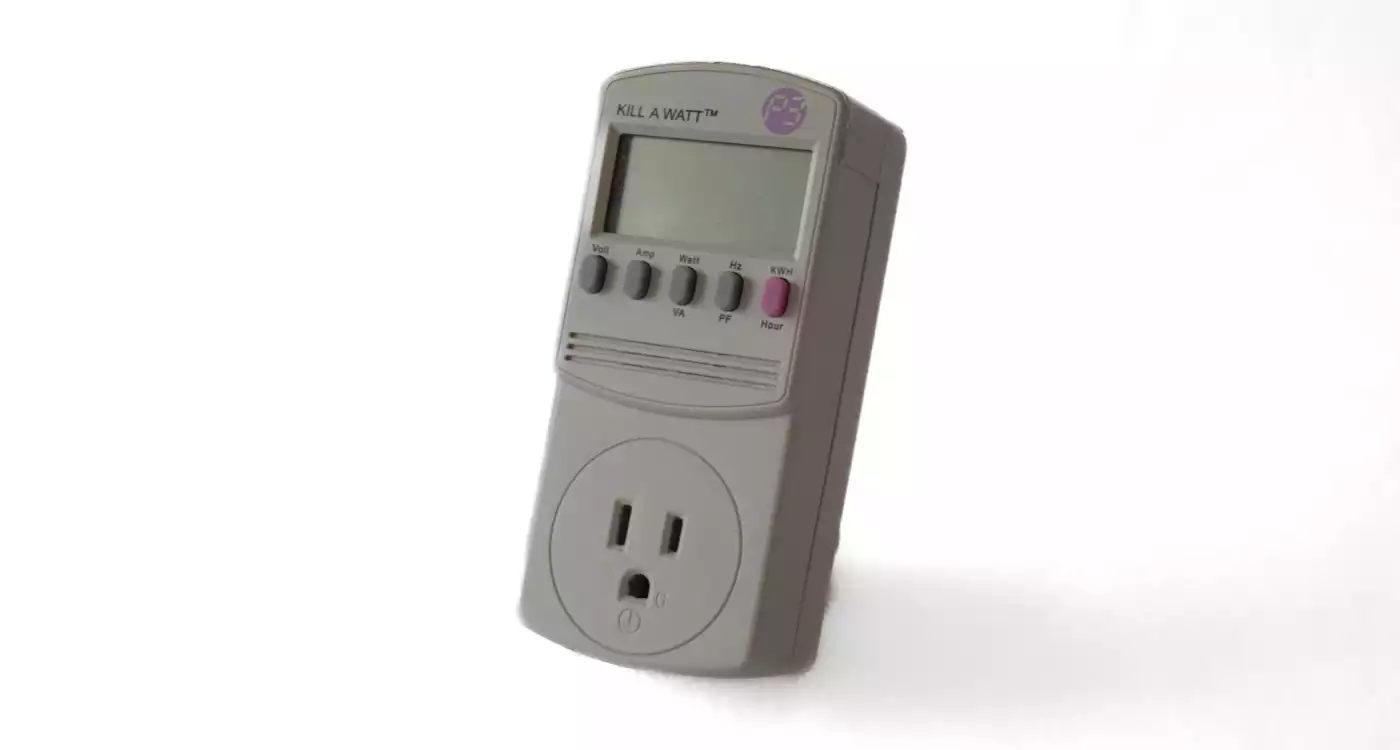
About
Use the Kill-a-Watt meter to measure electricity consumption and understand the energy costs of any AC appliance or device. Use this information to make educated decisions on conserving energy, shutting off devices, and upgrading to more efficient appliances.
Instructions
Kill-a-Watt readout options
The 5 buttons on the meter can display 8 different measurements:
- Gray buttons: Volts, Amps, Watts/Volts/Amps, Hertz/PowerFactor
- Pink buttons: Kilowatt Hours (KWH) or Hours it has been plugged in
Small letters on the screen show what is being measured
To use a Kill-a-Watt Meter
Step 1: Plug an electrical appliance or device into the Kill-a-Watt meter, then plug the meter into the wall socket. An extension cord between wall socket and meter may make the Kill-a-Watt easier to read.
Attention: The meter cannot be used on appliances that use more than 1875 Watts and may be damaged. Some microwave ovens or heavy power tools may exceed this limit.
Step 2: Push the “Watts” button on the meter. The screen will show how much electricity is being used at the moment. Note: If the screen shows a number with the letters VA next to it, press the button again and you’ll get watts.
“VAMPIRES”: also measure watch used when the appliances turned off. The Kilauea is great for finding Paul power vampires. These are appliances that suck power and hence increase your costs and greenhouse gas emissions even when they are apparently off because they merely enter a standby mode. Plug such appliances into a power strip so they can more easily shut them off fully or just unplug them.
Step 3: for appliances that get frequent use during the day (refrigerators, computers, TVs) the kilowatt can measure used over time. Keep the appliance connected to the meter for a period of time one or more days. The example below shows how to measure and calculate how much energy an appliance uses in one year.
An Example: using the Kill-a-Watt meter
Plug the refrigerator freezer into the kilowatt meter and let it collect data for a day or so. After a day (and without unplugging the meter!) you press the pink KWH Button wants and find out the fridge has used 2.45 kW. Then you press the pink button a second time to see the kilowatt meter has been running for 25 hours. Some simple math will not tell you how much energy your fridge is using any year.
Solving for the energy use for one year:
- 2.45 kWh / 25 hours = 0.098 kW average power.
- 24 x 365 = 8760 hours per year.
- 8760 hours x 0.098 kW = 854.48 kWh per year
Electricity cost approximately $.15 per kilowatt, so this refrigerator costs you roughly $130 to run per year. Note that the power used by your refrigerator will vary by season (higher when it’s warmer in the summer).
For more information check out the New Jersey solar renewable energy program at the website: https://www.njcleanenergy.com
An Electricity Primer (and explanation of Power Factor on the meter)
Watts = Volts x Amps
This formula is technically correct for a purely resistive load like a heating element e.g. oven or toaster that has an ideal power factor. The general form of the power formula correct for any load resistive or reactive is:
Watts = Volts x Amps x Power Factor
Power factor is a measure of the efficiency of a reactive load to convert power. Older refrigerators and freezers have inefficient power factors often less than 50% but new ones are much more efficient. If you’re running multiple motors on one circuit in your house if all the motors have a low power factor you might reach maximum amperage of your circuit breaker and blow the breaker.
Ideas for Use
Use the Kill-a-Watt meter to measure electricity consumption and understand the energy costs of any AC appliance or device. Use this information to make educated decisions on conserving energy, shutting off devices, and upgrading to more efficient appliances.Use the Kill-a-Watt meter to measure electricity consumption and understand the energy costs of any AC appliance or device. Use this information to make educated decisions on conserving energy, shutting off devices, and upgrading to more efficient appliances.
